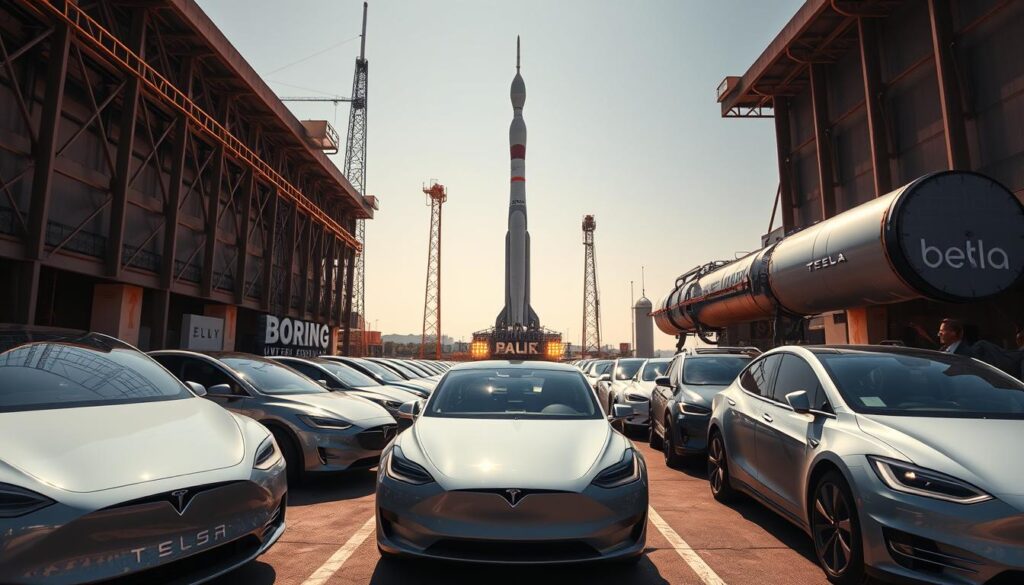Contents
When the world slowed down in 2020, Elon Musk’s net worth made him the richest man in the world because it rocketed to new heights. While millions faced financial strain, Tesla’s stock surged by 1,400%, and SpaceX’s valuation crossed $100 billion. This wasn’t luck—it was a perfect storm of innovation, timing, and market confidence.
Forbes reports the CEO’s net worth ballooned by nearly $293.7 billion between 2020 and 2022. His companies thrived as demand for electric vehicles soared and space exploration captured public imagination. Even during lockdowns, investors bet big on disruptive tech—and they won.
What’s the secret sauce? Strategic moves like expanding Tesla’s production and securing $15.4 billion in government contracts for SpaceX. As this analysis shows, his 37% stake in Tesla became a golden ticket. Meanwhile, ventures like Neuralink hinted at future breakthroughs.
Key Takeaways
- Tesla shares grew 14x during global lockdowns
- SpaceX valuations tripled with critical government partnerships
- Bold acquisitions positioned Musk’s companies for post-pandemic dominance
- Tech stocks outperformed traditional markets amid shifting consumer priorities
- Musk’s wealth reflects investor faith in long-term innovation over short-term crises
Examining how did elon musk get so rich during the pandemic

Economic downturns often create unexpected winners. While traditional sectors stumbled, tech-driven ventures thrived. At the heart of this shift sat two companies rewriting the rules of growth.
Tesla’s Stock Performance Surge
March 2020 changed everything. As factories shuttered, Tesla’s share price began an unprecedented climb—up 1,400% in 18 months. Three factors fueled this rise:
| Year | Average Share Price | Key Catalyst |
|---|---|---|
| 2019 | $35 | Model 3 production scales |
| 2020 | $180 | EV demand spikes |
| 2021 | $700 | S&P 500 inclusion |
The CEO’s bold moves—like opening Shanghai Gigafactory during lockdowns—proved crucial. Investors bet on sustainable transport becoming mainstream, not just a niche market.
SpaceX Growth Milestones
While Tesla dominated headlines, SpaceX quietly tripled its valuation. A $100 billion secondary share sale in 2021 cemented its status. Major wins included:
- NASA’s $3 billion lunar lander contract
- Starlink’s first profitable quarter
- Successful Crew Dragon missions
These achievements attracted institutional investors seeking long-term space infrastructure plays. For billionaires leveraging crisis-era trends, the pandemic became a springboard for generational wealth growth.
Elon Musk’s Business Moves and Innovations

Innovation doesn’t pause for pandemics—neither did this tech mogul’s empire-building. While traditional industries faltered, a bold strategy unfolded across sectors ranging from automotive tech to interplanetary travel. This multi-front approach turned market chaos into opportunity.
Expansion into Diverse Industries
Long before 2020, the groundwork was laid. Starting with Zip2 in 1996 and X.com (later PayPal), Musk mastered cross-industry disruption. By 2002, SpaceX entered the aerospace race—a move that paid off spectacularly when global supply chains strained. Here’s how it unfolded:
1. Automotive meets energy: Tesla expanded into solar roofs and battery storage as home energy demand spiked
2. Space infrastructure: SpaceX secured 60% of global commercial launch contracts by 2021
3. Neural frontiers: Neuralink’s brain-machine interface trials accelerated during lockdowns
This diversification created multiple income streams. While Tesla’s valuation soared, SpaceX’s $100 billion+ valuation provided stability. The result? A 189% net worth increase from March 2020 to December 2021, per Bloomberg data.
What separates Musk from other billionaires? Risk tolerance meets timing. While competitors retrenched, he doubled down on projects others deemed too ambitious. Starlink’s satellite internet service, developed pre-crisis, became vital for remote work—securing government contracts worth $886 million in 2020 alone.
These moves showcase a truth: crisis-ready businesses thrive by solving tomorrow’s problems today. From electric trucks to Mars colonies, each venture reinforces the others—a lesson in building wealth that outlasts market turbulence.
Comparative Wealth Trends Among Top Billionaires in the Pandemic Era

Market volatility became a wealth amplifier for tech titans. While Tesla and SpaceX dominated headlines, other billionaires rode different waves. Data reveals striking contrasts in fortune-building strategies between industry leaders.
Contrasting Portfolio Performance
Jeff Bezos added $86.2 billion to his net worth as Amazon became essential for lockdown living. However, this 56% increase paled next to Musk’s 618% surge. Three factors created this gap:
- Bezos sold $10 billion in Amazon stock early in the crisis
- Cloud computing growth slowed compared to EV excitement
- Space investments lacked SpaceX’s government contract momentum
Bill Gates saw more modest gains despite Microsoft’s remote work tools boom. His diversified holdings in railways and farms grew 19%—steady, but not stratospheric. This highlights how traditional assets underperformed next to disruptive tech bets.
Market Forces Reshaping Fortunes
April 2020 to December 2021 proved crucial. Tesla shares jumped 1,100% in these months, while Amazon rose 85%. Investor priorities shifted dramatically:
| Metric | Tech Sector | Traditional Markets |
|---|---|---|
| 2020 Growth | 48% | 3% |
| VC Investments | $150B+ | $42B |
The crisis accelerated wealth concentration in innovators. While 62 million Americans lost jobs, billionaire wealth grew 54% collectively. Strategic pivots to cloud services, streaming, and automation proved vital for maintaining growth trajectories.
Your takeaway? Market trends rewarded those betting big on societal transformation. From vaccine research to satellite internet, pandemic-era billions flowed to visionaries reimagining how we live and work.
Final Reflections on Pandemic Wealth Growth
Crises often reveal hidden opportunities. While 30 million Americans filed unemployment claims in 2020, tech innovators rewrote the rules of wealth creation. Tesla’s stock soared 1,100% as SpaceX secured lunar contracts—proof that market chaos favors prepared visionaries.
Three patterns defined this era. First, companies solving urgent needs thrived. Second, investors bet heavily on future tech. Third, concentrated gains outpaced traditional markets. The result? Billionaire fortunes grew six times faster than pre-crisis rates.
Compare these trajectories. Amazon added $86B to Bezos’ net worth—impressive, but dwarfed by Musk’s $170B surge. Why? Tesla’s Shanghai factory opened during lockdowns while SpaceX launched astronauts. Both moves signaled unstoppable momentum when competitors hesitated.
Your takeaway? Resilience requires bold bets on societal shifts. Whether building electric trucks or satellite networks, success favored those addressing tomorrow’s challenges today. As 45% of global wealth shifted to tech leaders, one truth emerged: crisis rewards those who build while others retreat.
Study these strategies. Track emerging sectors. Diversify across innovation frontiers. While no one predicts pandemics, adaptable businesses turn turbulence into triumph—a lesson etched in modern economic history.
